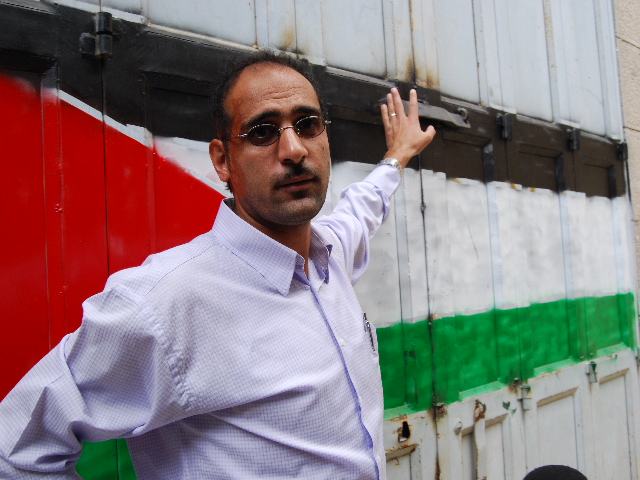Hebron is a unique city in more than one sense. It is one of the oldest cities in the world and considered a sacred site by all three monotheistic religions. It was under Jordanian control from 1948 to 1967, when the West Bank was invaded by Israel. Following the Oslo accord in 1993, the city was the subject of four years of special negotiations and ended up being divided into two zones, one controlled by the Palestinian National Authority and the other by the Israeli military.
Ever since the 1967 invasion, the aim of successive Israeli governments has been to establish a Jewish community in the Old City of Hebron. Today, the city of around 170,000 inhabitants is the only one on the West Bank that has Israeli settlements in the middle of the city centre. Around 400 Israeli settlers live in the Old City, supported by 1,500 soldiers.
The Israeli occupation forces – whether represented by the armed forces or mobs of (sometimes armed) settlers – have implemented a range of abusive measures designed to intimidate and drive out Palestinian residents, including barring access routes and physically and psychologically terrorising civilians. Historically a bustling centre of commerce, the Old City today has become a ghost town, as Palestinian shops and market stalls have been forced to close, either by direct order from the Israeli forces or because their businesses are no longer viable. Everywhere, the signs of military occupation are starkly visible.

We start our walk from the Palestinian side of the city, which is bustling with life.

Gradually, however, as we approach the Israeli-controlled part of the old city, the streets begin to empty.

Rows of shops have been bolted up by the Israeli forces – the only explanation given is that this is “for security reasons”.

Movement around the Old City is severely restricted. Everywhere you go, physical barriers like these have have been put in place. In total, there are 103 physical closures in Hebron, including checkpoints, earth mounds and concrete barriers, making life extremely difficult for Palestinian residents.

The street that runs past the building to the right in this picture, an Israeli settlement, is closed to Palestinians. In order to reach the other side, previously only a 2-minute walk away, they now have to travel 12km.

What is perhaps most shocking to the first-time visitor is the way in which the Old City has been divided vertically. The picture above shows Israeli settlements that have been build literally on top of Palestinian houses and are connected through a bridge high above street level. Residents and shop-keepers have been forced to put up a net to protect themselves from rubbish being hurled at them from above by the settlers; yet another intimidation strategy.

As we walk, settlers look down at us from high above.

Everywhere, there are soldiers on the rooftops. The feeling of being watched is intensified by the hundreds of CCTV cameras that are dotted all over the city, literally recording our every movement.

On the particular day that we visited Hebron, there was a special Jewish holiday, which meant that the military presence in the Old City was even stronger than usual.


Shortly after entering the Old City, we encountered hundreds of settlers marching through the narrow streets, supported by dozens of soldiers following their every step.

In the face of this overwhelming military force and intimidation, Palestinian traders resist simply by staying put and refusing to leave the Old City.

Jamal Zuhair Maraga, who owns a market stall selling traditional Palestinian crafts, spoke to us about his constant struggle for survival. “My only income is from the goods I sell to groups of international visitors like yourselves”, he said, “but I hardly have any customers because people are scared to enter the Old City”. His message to international visitors was clear: buying Palestinian-produced goods from market traders in Hebron is a concrete act of solidarity.

Founded in 1996, the Hebron Rehabilitation Committee works to preserve the cultural and architectural heritage of Hebron and to revive the Old City as a commercial and cultural centre. It reclaims abandoned buildings, rehabilitates infrastructure and provides financial and moral support to enable residents and traders to remain in the city centre. More information about the work of the HRC can be found here.
A report in Portuguese by Dirceu Travesso is available here and a video report by Jason Nardi has been published on WSF TV.
Text and images: Hilde C. Stephansen / Ciranda




